13 Remote Villages Known for Folklore and Ancient Rituals
In some of the most isolated corners of the world, there are villages that hold a rich tapestry of folklore and ancient rituals. These remote places are steeped in stories that have been told for generations, often deeply connected to the natural world. The customs and beliefs found here offer a glimpse into a time when life was simpler, yet full of mystery. Exploring these villages can be like stepping into a living history book.
This post may contain affiliate links, which helps keep this content free. Please read our disclosure for more info.
Acoma Pueblo, New Mexico, USA
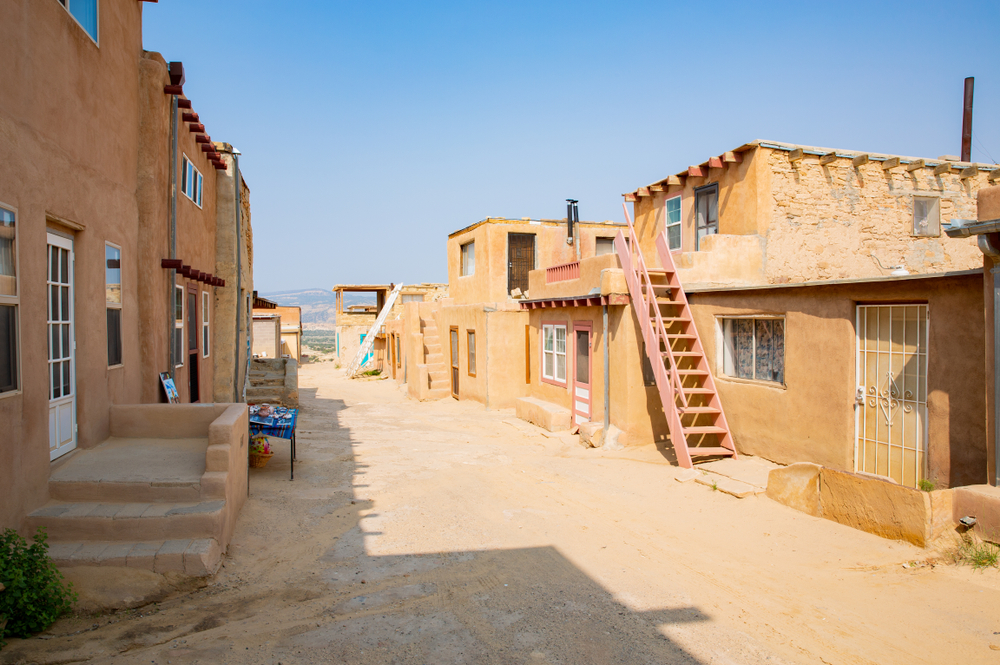
Acoma Pueblo is one of the oldest continuously inhabited communities in North America. Known as the Sky City, this village sits atop a 367-foot sandstone mesa in New Mexico. The village’s residents maintain a rich cultural heritage, with their folklore centered around the spirit world and the land. Acoma people have performed sacred rituals for centuries, often held in secret and passed down through generations. Visiting this village offers a rare glimpse into a living culture that has preserved its ancient ways despite outside influences.
The rituals of Acoma are deeply tied to their agricultural practices, especially corn cultivation, which is central to their beliefs. The village is famous for its pottery, which is intricately designed using ancient techniques. Most ceremonies and dances are tied to the harvest and the changing seasons. The Acoma people continue to uphold their traditions, and the village remains a center for preserving Native American spirituality. For those interested in indigenous culture, Acoma Pueblo is a treasure trove of tradition and history.
Muktinath, Nepal
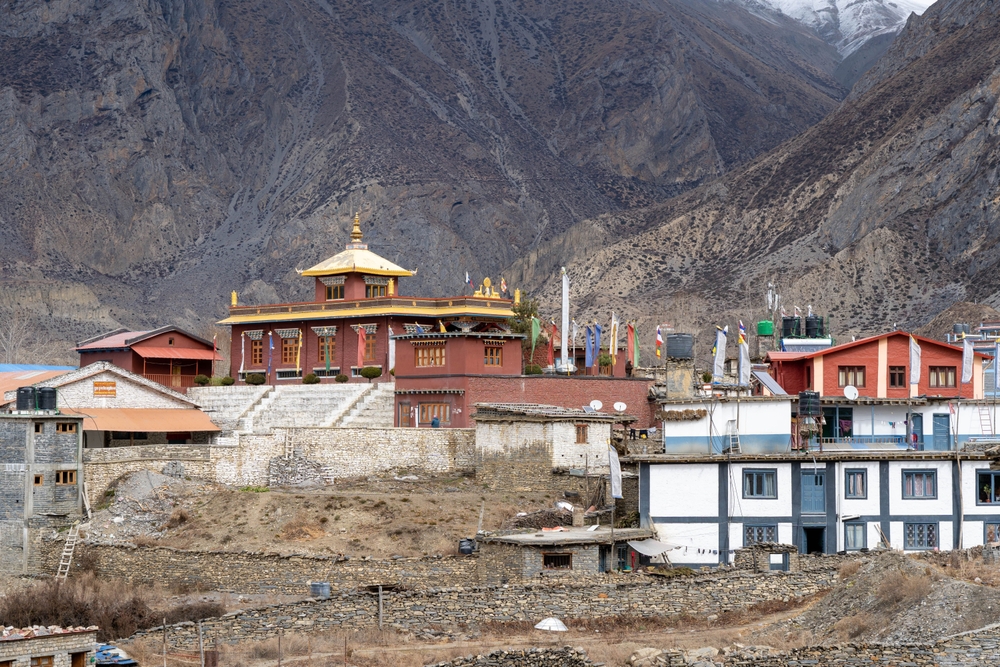
Muktinath, located in the Himalayan region of Nepal, is a sacred village for both Hindus and Buddhists. The village is home to the famous Muktinath Temple, a pilgrimage site believed to be the place of salvation. People from various parts of the world come to perform rituals that cleanse their souls and free them from the cycle of rebirth. The temple’s waters, believed to have miraculous healing powers, play a central role in many of the ancient ceremonies performed here. Pilgrims can be seen bathing in the sacred water, symbolizing purification and spiritual renewal.
The rituals practiced in Muktinath are a blend of Hindu and Buddhist traditions, making the village a unique cultural fusion. The villagers continue to hold regular festivals dedicated to their deities and offer prayers in the temple’s courtyard. These practices are deeply connected to the natural environment, with offerings often made to the surrounding mountains and rivers. The importance of Muktinath as a religious hub dates back over a thousand years. Its spiritual significance is a key reason why Muktinath has remained a central part of the region’s folklore and religious rituals.
Dimmuborgir, Iceland

Dimmuborgir, meaning Dark Castles, is a volcanic region in northern Iceland known for its otherworldly rock formations. According to local folklore, the area is home to trolls and elves who live among the towering, lava-sculpted pillars. The village’s folklore includes stories of hidden caves and mystical creatures, making it a place of enchantment. Many Icelandic rituals center around the belief in hidden folk, with ceremonies conducted to honor the spirits of nature. Visitors often take guided tours to explore the natural beauty of Dimmuborgir while learning about its mystical past.
The most famous event in Dimmuborgir is the Icelandic Yule Lads’ visit, an ancient holiday ritual that takes place around Christmas. These mischievous characters are said to visit children, leaving gifts or coal depending on behavior. The area is also home to an ancient pagan ritual site, where offerings were made to gods in times long past. Despite being a tourist destination, Dimmuborgir continues to be a place of spiritual importance for many. Its otherworldly atmosphere is perfect for those looking to connect with the supernatural side of Icelandic culture.
Sauraha, Nepal
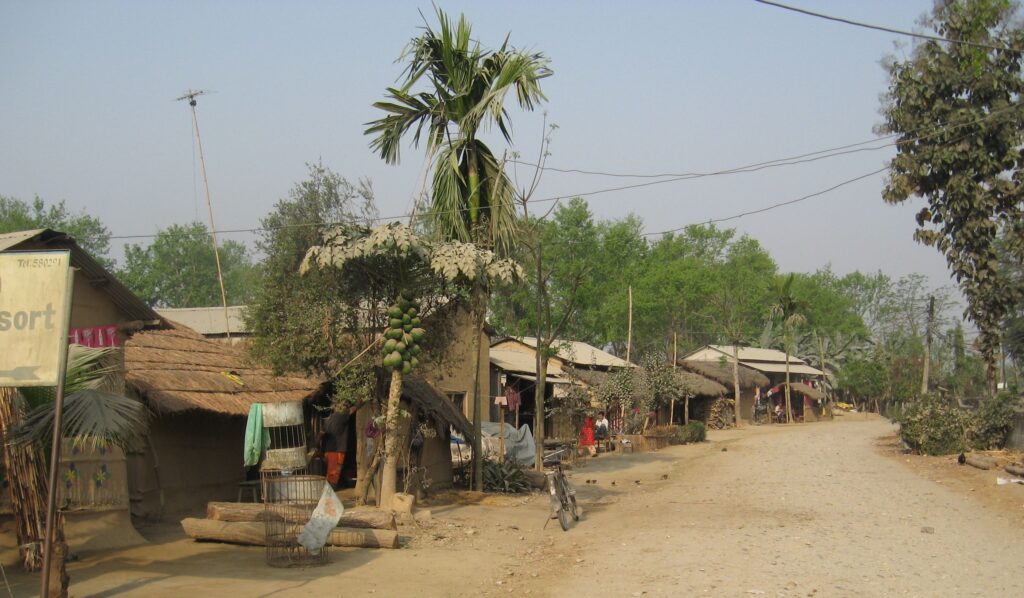
Sauraha, a village located near Chitwan National Park, is known for its deep connection to indigenous traditions and wildlife. The village is inhabited by the Tharu people, an ethnic group that has maintained its ancient customs for centuries. Their folklore revolves around the natural world, especially the forests and rivers that surround them. Many of their rituals are designed to honor nature spirits, such as those believed to protect crops and animals. Sauraha offers an authentic look at how indigenous people live in harmony with their environment.
The Tharu people also celebrate several festivals throughout the year, such as the Maghi Festival, which marks the start of the farming season. Ritual dances and songs are performed to invoke blessings for a prosperous harvest. The village has a rich cultural history, and visitors often find themselves immersed in the local traditions. Sauraha is also known for its elephant safaris and jungle treks, which give tourists a chance to connect with nature while learning about the rituals tied to the area. It is a wonderful destination for those interested in traditional culture and wildlife.
Banjara Village, Rajasthan, India

The Banjara village in Rajasthan is home to the Banjara people, a nomadic tribe that has maintained its distinct cultural practices for centuries. The village is known for its colorful clothing, vibrant festivals, and the famous Banjara dance, which is an integral part of their rituals. Their folklore is rich with tales of gods and spirits, often related to their connection to the land and their animal herds. The Banjara people perform sacred rituals to protect their herds, ensuring the prosperity of their livelihoods. These ceremonies are performed with music, dance, and offerings to honor the spirits of nature.
The Banjara tribe’s history is tied to their nomadic lifestyle, and their rituals reflect their deep connection to the earth. Traditionally, they perform rites to celebrate milestones like the harvest, the birth of animals, and marriage. These rituals are often accompanied by chanting and dancing, which help to strengthen the bond within the community. Visitors to the village can witness the beauty of these dances and gain insight into the tribe’s spiritual beliefs. The Banjara people’s culture offers a fascinating look into one of India’s most ancient and resilient communities.
Lijiang, China
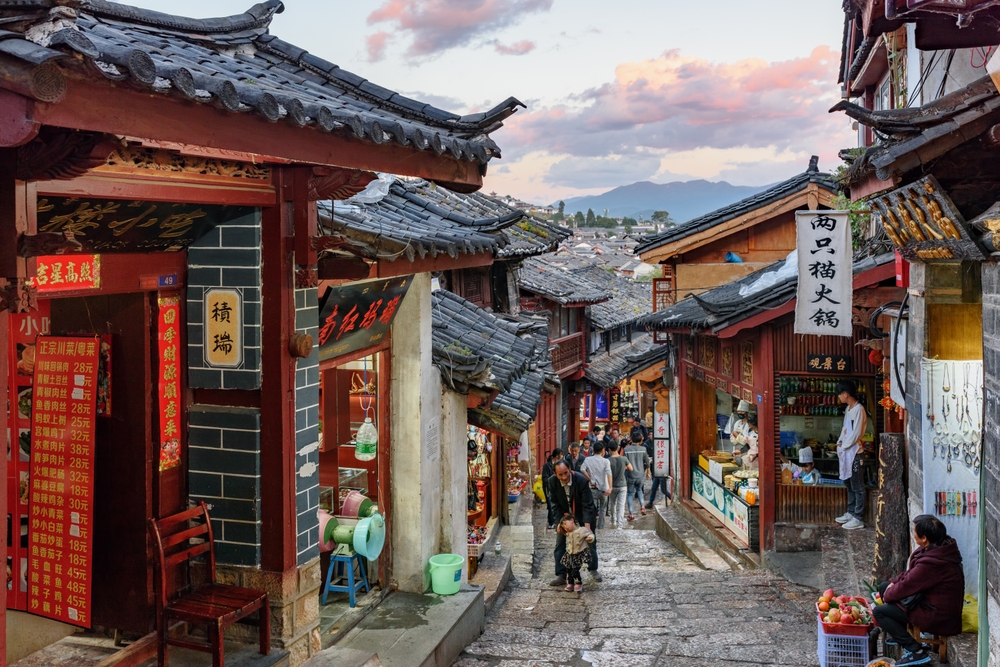
Lijiang, a UNESCO World Heritage site in southwestern China, is known for its preserved ancient traditions and folklore. The town is home to the Naxi people, an ethnic group with a rich spiritual heritage that dates back thousands of years. Lijiang’s folklore includes tales of gods, ancestors, and the mystical forces believed to influence daily life. Many of the Naxi’s ancient rituals are connected to their reverence for nature and the cosmos. The village is also famous for its sacred Dongba ceremonies, which involve dancing, chanting, and offerings to the gods.
Lijiang’s ancient rituals and traditions are still alive today, with the Naxi people performing them during important festivals and events. The Naxi people also follow a unique written script, known as Dongba, which is used in their religious ceremonies. Lijiang’s Old Town is a labyrinth of narrow streets, temples, and ancestral homes, making it a place where ancient customs are honored. The village’s role in preserving Naxi culture is a key reason why it remains one of China’s most historically significant places. Visitors are encouraged to explore the town and participate in its cultural activities to experience the ancient customs firsthand.
Obor Village, Hungary

Obor is a small village in Hungary, known for its deep ties to ancient pagan rituals and folklore. The village is home to the Székely people, who maintain a rich heritage of customs and legends passed down through generations. Many of the rituals in Obor are related to fertility, harvests, and the changing seasons, with specific ceremonies performed to honor the earth and the spirits believed to reside within it. The village’s folklore includes stories of witches, ghosts, and other supernatural beings, many of which are still referenced in modern-day celebrations. The village’s connection to its pagan past is a key part of its identity.
Obor’s festivals are a blend of ancient rituals and modern celebrations, and they provide a glimpse into the life of the Székely people. The most famous of these festivals is the winter solstice celebration, where people gather to perform traditional dances and chants. These events allow the villagers to express their gratitude to the earth and spirits for their protection. For visitors, it’s an opportunity to witness a culture that has preserved its traditions over centuries. Obor’s folklore and ancient rituals continue to be a source of pride for its residents, keeping the spirit of its ancestors alive.
Eze Village, France

Eze is a medieval hilltop village in the French Riviera, famous for its ancient history and the mystical folklore that surrounds it. The village is said to be home to several secretive societies, and its narrow cobbled streets have long been associated with alchemy and the occult. Eze’s folklore includes tales of hidden treasures, mystical symbols, and the powerful energy believed to reside in the rocks and trees surrounding the village. Many of the ancient rituals performed here are connected to the cycles of the moon and the earth, believed to bring prosperity and protection. Today, Eze is a blend of ancient customs and modern luxury, but its spiritual roots remain strong.
The village is also home to the famous Fragonard Perfume Factory, where ancient alchemical techniques are still used to create signature scents. Visitors can tour the factory and learn about the history of fragrance production, a craft steeped in centuries-old rituals. Eze’s stunning views of the Mediterranean Sea add to the enchanting atmosphere, making it a magical destination. Many visitors are drawn to the village not just for its beauty, but for the sense of mystery that still lingers in the air. Whether you are exploring the spiritual folklore or simply soaking in the atmosphere, Eze offers a unique experience.
Toraja, Indonesia
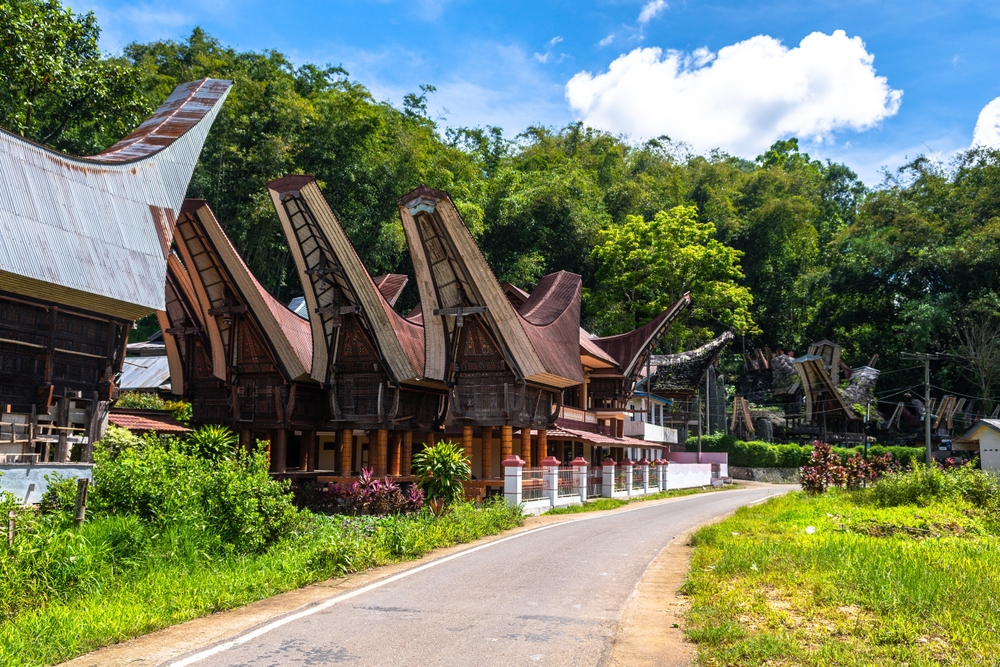
Toraja is a remote region in Sulawesi, Indonesia, famous for its elaborate funeral rites and unique cultural traditions. The Toraja people practice one of the most complex and fascinating funeral rituals in the world, which can last for days, with elaborate ceremonies and rituals to honor the deceased. The villagers believe in a spirit world where ancestors watch over their descendants, and these ceremonies are meant to ensure the deceased’s safe passage to the afterlife. Toraja is also known for its stunning architecture, with traditional Tongkonan houses that reflect their spiritual beliefs. Visitors to Toraja can witness these extraordinary ceremonies, which include animal sacrifices, dance, and feasts.
The Toraja people’s strong connection to their ancestors is evident in every aspect of their life, from the elaborate burial sites carved into the mountainside to the rituals performed during the harvest season. The annual Ma’nene ceremony is another unique event where the dead are exhumed, cleaned, and dressed in new clothes, symbolizing respect for their ancestors. Toraja’s blend of rituals and belief in the afterlife creates an atmosphere unlike any other. For those interested in anthropology, Toraja offers an unparalleled look into one of the most mystical cultures in Southeast Asia. The village remains a living testament to the spiritual traditions that have shaped the Toraja people for centuries.
Dargavs, Russia
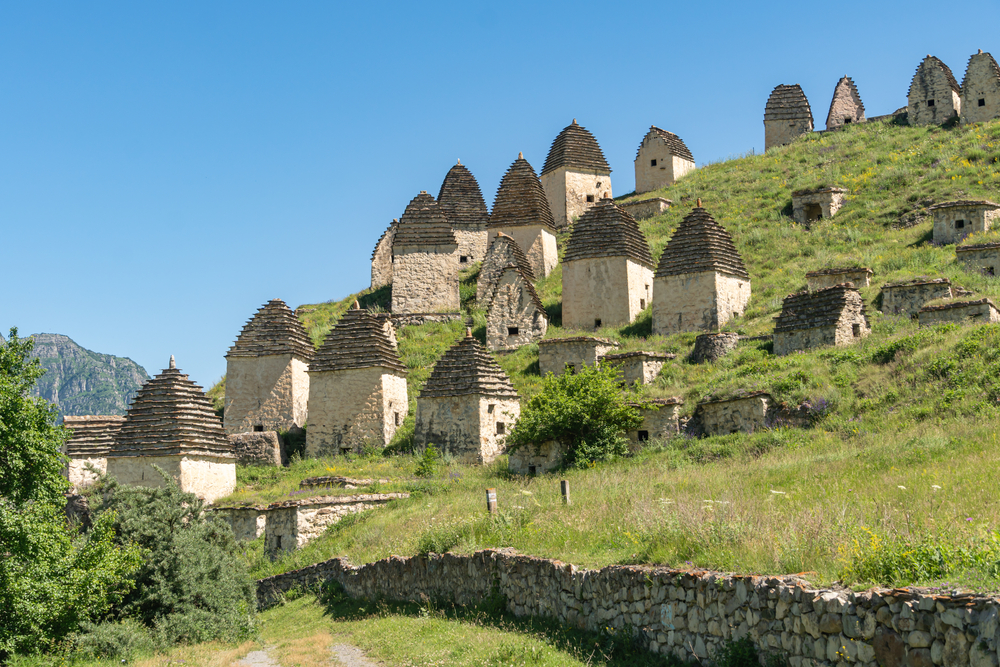
Dargavs, a small village in the Republic of North Ossetia-Alania in Russia, is often referred to as the City of the Dead. This eerie village is known for its ancient burial structures, which are built into the hillside and contain the remains of thousands of people. According to local folklore, Dargavs has a dark history tied to an ancient plague that swept through the area, and many believe that the spirits of those who died during the plague still linger. The burial sites, known as crypts, are part of an ancient ritual that ensures the deceased remain close to their ancestors. This place has fascinated archaeologists and tourists alike, with some daring to visit the site to learn about its grim history.
The village’s unsettling atmosphere is heightened by the eerie view of the crypts carved into the mountain and the desolate surroundings. Many locals continue to follow ancient traditions, offering prayers and tributes to the spirits of the deceased. The crypts are believed to be connected to the belief that the soul must be honored and provided with a resting place near its ancestors. Dargavs offers a rare and haunting experience for those interested in the history and rituals surrounding death. The village continues to be a site of cultural significance for the people of North Ossetia, carrying on rituals that connect them to the past.
Vang Vien, Laos
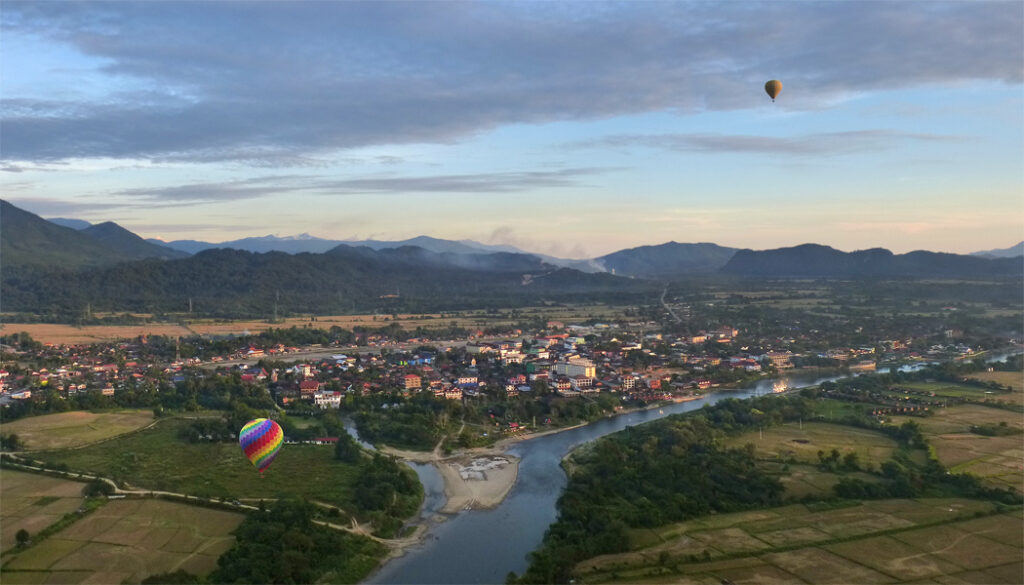
Vang Vien is a quiet town in Laos surrounded by stunning limestone mountains and the Nam Song River. The village is known for its vibrant folklore and traditional rituals, which are deeply tied to the spiritual life of the locals. The people of Vang Vien practice animism, believing that the land, rivers, and trees are inhabited by spirits that must be respected and appeased through rituals. One of the most important ceremonies is the Baci ritual, where offerings are made to spirits for protection and good fortune. This ritual is a key part of local celebrations, including weddings and births, and reflects the community’s deep spiritual connection to nature.
The Baci ceremony involves chanting, the offering of food, and the tying of white threads around a person’s wrist to invoke blessings and harmony. The village is also known for its traditional healing practices, where local shamans use herbs and spiritual guidance to treat ailments. Vang Vien’s remote setting and preservation of ancient traditions make it an ideal destination for those interested in exploring the spiritual customs of Southeast Asia. The beauty of the surrounding landscape only enhances the magical feeling of the village, making it a unique place to learn about the cultural rituals of Laos. Visitors can experience these traditions firsthand by attending local festivals or participating in the Baci ritual.
Ollantaytambo, Peru

Ollantaytambo, located in the Sacred Valley of the Incas in Peru, is known for its ancient Inca ruins and strong ties to spiritual rituals. The village, which dates back to the Inca Empire, continues to be an important center for indigenous culture and ceremonies. Local folklore revolves around the worship of Pachamama, the goddess of the earth, and many rituals are performed to honor her and ensure a successful harvest. One of the most significant rituals is the Inti Raymi festival, which celebrates the winter solstice and honors the sun god, Inti. The village’s connection to the spiritual and natural world is an integral part of daily life for its inhabitants.
Ollantaytambo is also famous for its ancient stone terraces, which were once used for agricultural rituals. The village’s layout reflects Inca planning, with narrow streets and buildings constructed around sacred temples and shrines. The ruins of the Temple of the Sun and the surrounding mountains are considered to have powerful energy, and many local ceremonies take place in these areas. Visitors can participate in traditional rituals, such as offerings to the earth or the sun, and learn about the spiritual significance of the Inca practices. Ollantaytambo continues to be a living testament to the deep spiritual beliefs and traditions of the Inca civilization.
Tulum, Mexico

Tulum, located on the Yucatán Peninsula in Mexico, is a village known for its Mayan ruins and ancient rituals. The village’s folklore is deeply connected to the Mayan gods and the natural world, with many rituals performed to honor the earth, water, and the sun. One of the most important ceremonies is the Mayan Day of the Dead, where offerings are made to the ancestors to ensure their protection and guidance. The Mayan people of Tulum believe that the spirits of their ancestors live on in the land, and they maintain a deep spiritual connection to the earth through rituals. Visitors to Tulum can experience these rituals firsthand and explore the rich history of the ancient Maya civilization.
Tulum’s connection to the sea also plays a role in its spiritual practices, with many rituals performed near the water to invoke blessings from the ocean and the gods. The ancient Mayan ruins, such as the Temple of the Wind and the Castle, are still significant spiritual sites, where offerings are left in hopes of receiving protection and guidance. Tulum’s blend of natural beauty and ancient traditions offers a unique opportunity to connect with the Mayan culture and explore their sacred rituals. The village’s modern popularity as a tourist destination has not diminished the importance of its ancient practices, which continue to thrive today. For those interested in Mayan history and spirituality, Tulum is a fascinating place to visit.
This article originally appeared on Avocadu.
